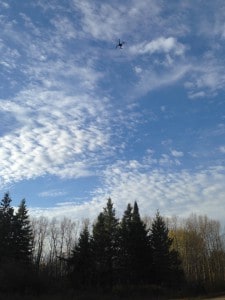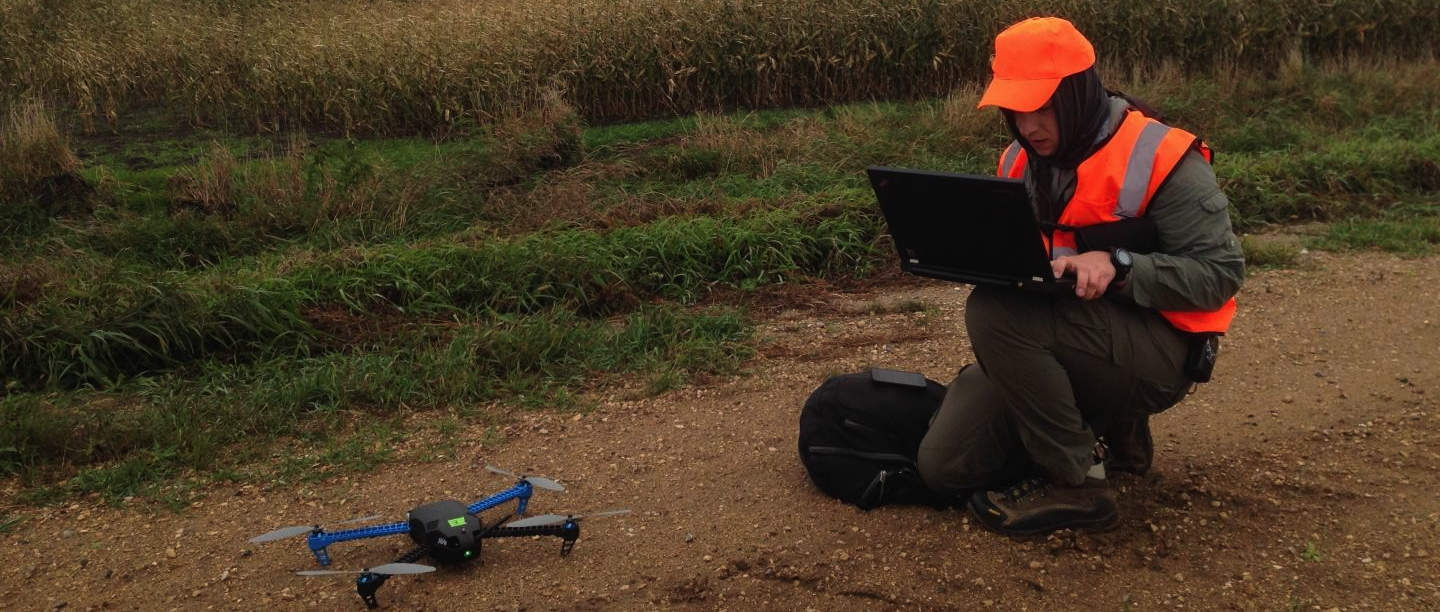Share this article
Video: Drones Quicken the Heart Rates of Bears
Humans and bears might not be all that different when it comes to responding to drones flying overhead.
A new study shows that when researchers flew these unmanned aerial vehicles (UAV) over bears in the wild, the animals displayed quickened heart rates, even if they didn’t necessarily flinch.
“One of the important things is understanding how different species respond differently to UAV flights,” said Mark Ditmer, a conservation biologist with the University of Minnesota and lead author of a new study released in Current Biology. “There are other sorts of responses going on that we just can’t visualize.”
Researchers flew drones over bears fitted with cardio loggers in order to see how the bears reacted to unfamiliar objects flying overheard. This video shows a drone flying over two black bears in a field. Video courtesy of Ditmer et al./Current Biology 2015
He and other researchers captured American black bears (Ursus americanus) in the northwest corner of Minnesota and implanted them with cardiac biologgers that tracked the bears’ pulses and fitted them with GPS collars. Using the bear’s location from the GPS signal, they then sent drones outfitted with cameras over the bears to see whether the devices had any effect on the bears’ heart rates.
“We knew where the drone was at all times, we knew where the bear was every two minutes, and we knew the bear’s heart rates every two minutes,” Ditmer said.

On a completely autonomous mission, the UAV flies toward the location of a collared bear in northwestern Minnesota. Image credit: Jessie Tanner
Surprisingly the bears only showed a behavioral response to the buzzing drones two of the 18 times they were flown over the animals.
But in every single case the bears showed an increased pulse. In the most extreme case a bear’s heart rate went from 41 beats per minute before the drone approached to 162.
And in general, “the closer the drone got, the bigger the spikes.”
The research shows that wind also played into the bears’ shock factor. There were larger spikes in the bears’ heart rates when the wind was high, and Ditmer thinks this has to do with the surprise factor: Bears may not be able to hear the drone coming until it was right overhead.
He said that while drones can be helpful for research and conservation purposes, these studies help show how close the flying devices can get to animals without causing them any trouble.
“It’s sort of a cautionary tale that there might be more going on there.”
Header Image: Mark Ditmer downloads the GPS coordinates of a collared bear to input into a drone mission. Using that information, researchers program UAVs to fly to the most recent location of the bear.
Image credit: Jessie Tanner (@jessiectanner)








